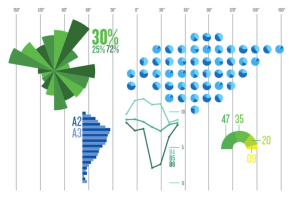No, its not the title of Chetan Bhagat’s next novel (though it could well be). A colleague in the School of Life Sciences pointed me to a new site, Nature Index, “A global indicator of high-quality research” that “tracks the affiliations of high-quality scientific articles. Updated monthly, the Nature Index presents recent research outputs by institution and country.”
 The 15 in the title above, is the overall ranking of the UoH, relative to all Indian institutions, based on our publications in all scientific fields, with 6, 8, and 22 being the rankings separately in Chemistry, Life Sciences and Physics. This is for the year 1 September 2013 to 31 August 2014, and presumably other time periods can be queried on the NI site as well.
The 15 in the title above, is the overall ranking of the UoH, relative to all Indian institutions, based on our publications in all scientific fields, with 6, 8, and 22 being the rankings separately in Chemistry, Life Sciences and Physics. This is for the year 1 September 2013 to 31 August 2014, and presumably other time periods can be queried on the NI site as well.
There is reason to be pleased. We are the highest ranked University overall, and above us are only institutes like TIFR, RRI, IISc and consortia like the entire IIT system or all the CSIR laboratories put together. And this has happened in spite of the poor funding for science in the country, and for Universities in particular. As we are painfully aware, the real level of funding that we have to contend with has been very very meagre…
The ranking is based on the Article Count, namely the number of articles published from the institution. More formally, “a count of one is assigned to an institution or country if one or more authors of the research article are from that institution or country, regardless of how many co-authors there are from outside that institution or country” in computing the AC. There are other measures that can make us look even better such as the Fractional Count (FC), “that takes into account the percentage of authors from that institution (or country) and the number of affiliated institutions per article. For calculation of the FC, all authors are considered to have contributed equally to the article”, and the equation in the title then becomes, if we use the FC, 8=6+11+19. And to normalize, the corresponding equation for another Central University with which we share many similarities is 18=22+3+29.
In all these lists, there are no Universities that are ranked above us in Chemistry, one in the Life Sciences, and very few in Physics, so these country specific rankings say as much about us as about the funding patterns, the focus on research, and on infrastructure and support. Nevertheless, if anyone out there is looking, its pretty clear which among the Central Universities really is a University of Excellence.







